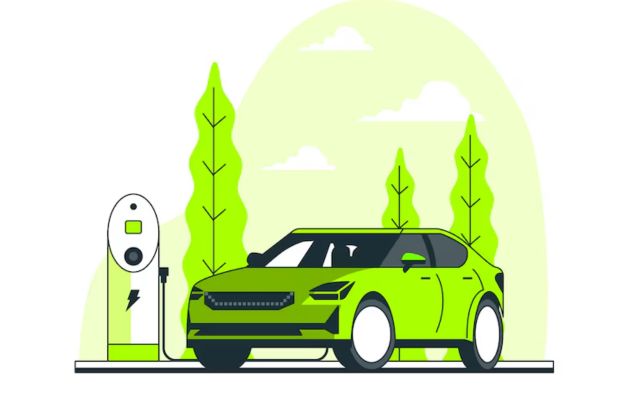Our Terms & Conditions | Our Privacy Policy
UP, Maharashtra & Karnataka Drive 40% of India’s EV Sales
Highlights :
- India’s electric vehicle performance in 2024 was spearheaded by Uttar Pradesh contributing 19% of the national total. followed by Maharashtra (12%) and Karnataka (9%)
- It found a strong alignment between sales and infrastructure growth
UP, Maharashtra & Karnataka Drive 40% of India’s EV Sales
In a defining moment for India’s electric mobility revolution, electric vehicle (EV) sales soared to 19 lakh units in 2024, marking a 19% increase over 2023, according to the International Council on Clean Transportation (ICCT) report. This was accompanied by a record expansion of 25,202 public charging stations nationwide. These achievements align with the PM Electric Drive Revolution in Innovative Vehicle Enhancement (PM E-DRIVE) scheme set to drive further transformative progress.
Comparative Performance of Top 10 States in 2024
The report compared and found the EV sales across Indian states. It found, that India’s electric vehicle (EV) performance in 2024 was spearheaded by a handful of states, with Uttar Pradesh leading EV sales, contributing 19% of the national total. This was followed by Maharashtra (12%) and Karnataka (9%). These three states accounted for 40% of all EV sales in the country. Tamil Nadu followed this with 7% along with Rajasthan, and Bihar with 6% each, demonstrating growing adoption across diverse regions.
EV Infrastructure Growth
On the infrastructure front, the report found, that Karnataka led with the largest public charging network (5,765 stations), accounting for 23% of the national total. Maharashtra (3,728) and Uttar Pradesh (1,989) followed. This reflects as strong alignment between sales and infrastructure growth. Delhi and Tamil Nadu rounded out the top five in charging station installations. Together, the top 10 states drove over 70% of India’s EV sales and hosted the majority of its public charging stations, showcasing the regional momentum behind the country’s electric mobility push.
Growth in EV Sales and Charging Network: 2024 Showcased Synchronized Leap In EV Adoption and Infrastructure
The report found, “EV sales in the two-wheelers led the charge with 59% of total sales, followed by three-wheelers at 35%. In the Charging Infrastructure segment, the number of public charging stations grew to 25,202 by December 2024. Karnataka led with 5,765 stations (23% of the total), followed by Maharashtra (3,728) and Uttar Pradesh (1,989). This alignment between adoption and infrastructure ensures seamless support for India’s growing EV ecosystem.”
PM E-DRIVE: Addressing the Next Frontier
The second iteration of India’s EV demand promotion policy, the Faster Adoption and Manufacturing of Electric Vehicles in India II (FAME II) concluded in March 2024, after being in force for 5 years. According to the research by ICCT, 69% of the ₹11,500 crore earmarked under the scheme was utilized by the end. Another study by ICCT found that FAME II utilized 75% of the ₹893 crore allocated for charging infrastructure development.
The study ICCT study suggests prioritizing the following, for the optimum utilization of INR 2,000 crore allocated for the charging infrastructure under the PM E Drive scheme:
- Charging stations in and around residential buildings or multi-unit dwellings
- The development of DC fast chargers for trucks and buses on the Golden Quadrilateral highway network that comprises of 0.5% of India’s road network but carries 40% of the country’s road freight.
- Support for all charging solutions with technology-neutral incentives that apply to all charging methods including wired charging and battery swapping
- Support for specific cost-related challenges like upstream charging infrastructure and land could be subsidized under the scheme’s incentives
“EV incentive policies, including FAME and PM E-DRIVE, have been major drivers for the initial rise in the EV uptake and charging infrastructure in India. The year 2025 will be crucial as India forges ahead in its transition towards clean mobility, with the potential introduction of supply-side regulations such as fuel economy standards, which is imperative for the country to achieve its climate objectives”, Sumati Kohli, Researcher, ICCT
Images are for reference only.Images and contents gathered automatic from google or 3rd party sources.All rights on the images and contents are with their legal original owners.



Comments are closed.